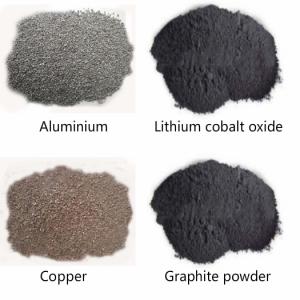Battery Recycling Equipment
The lithium-ion battery market is growing rapidly. Most of that demand comes from electric car makers like Tesla. Cobalt and lithium are needed in the manufacture of lithium-ion batteries, so they become more expensive. As demand for these metals increases, the lithium-ion battery market becomes more viable.
Sherlock makes a lot of the equipment that recycling lithium-ion battery needs. Although there are other ways to recycle batteries, the method outlined below is a cost-effective and environmentally friendly way to recycle lithium-ion batteries.
Different battery types require different battery recovery equipment. For example Lithium Battery Crushing Recovery Equipment, lithium battery positive and negative pole recovery equipment, flexible packaging battery treatment recovery equipment, hard packaging battery treatment recovery equipment, cylindrical battery Treatment Recovery Equipment

Today we focus on flexible packaging battery treatment and recycling equipment.
Flexible Battery Treatment and recycling Equipment

The recovery and treatment equipment of waste flexible battery mainly adopts a physical recovery method, supplemented by "three wastes" disposal measures. It has the characteristics of green, low carbon, energy-saving, environmental protection, and no secondary pollution, and gives consideration to both economic and environmental benefits, the utility model not only realizes the utilization of the valuable components but also can treat the harmful components harmlessly. The whole recovery process has achieved industrial automation, high recovery efficiency, strong processing capacity, an hourly capacity of 500 kg, an annual capacity of 5000 tons, waste lithium battery valuable components recovery rate of more than 90% .
Cobalt, lithium, copper, and plastics in waste lithium batteries are valuable resources with high recovery value. Therefore, the scientific and effective disposal of waste lithium batteries not only has significant environmental benefits but also has good economic benefits. The lithium battery is mainly composed of Shell, positive pole, negative pole, electrolyte, and separator. The positive electrode is formed by coating lithium cobalt powder on both sides of the aluminum foil current collector by PVDF, which plays the role of adhesion. At present, the research of recycling waste lithium batteries mainly focuses on the recovery of cobalt and lithium, which have high value, and there are few reports on the separation and recovery of anode and material. In order to alleviate the problem of resource shortage and environmental pollution caused by rapid economic development, it has become a global consensus to recycle waste materials. Copper (the content of about 35%) is an important raw material for lithium battery, and the carbon powder adhered to it can be used as additives of plastics and rubber. Therefore, the effective separation of waste lithium batteries and their components can promote the recycling of waste lithium batteries and eliminate the corresponding environmental impact. The common recycling methods of waste lithium batteries include Hydrometallurgy, pyrometallurgy, and mechanical physics. Compared with the wet method and fire method, the mechanical physical method does not need chemical reagent and consumes less energy. It is an environmentally friendly method.
Description of equipment and process:
The battery is shredded by a conveyor into a Class A shredder. The shredded material is fed into a two-stage multi-knife crusher through a conveyor for * Times of crushing. The material after the second crushing is fed into the conveyor and magnetic separation equipment is set up at the same time, iron can be separated from the material. The separated material is fed into the air separator by a conveyor, and the positive and negative separator paper is separated by an induced draft fan and a cyclone feeder. The separated positive and negative separator pieces are then finely crushed in a three-stage pulverizer, crush the material to about 20 Mesh. The crushed material is filtered into the cyclone by the negative pressure system and separated by two air streams to make the material of different density separate into layers, then the material is mixed with copper, aluminum, nickel, and other materials, and all the ultra-fine dust is brought into the pulse dust collector by the negative pressure system for collection. The filtered exhaust gas will continue to be sent to the exhaust gas treatment equipment from the negative pressure system for air purification, making it meet the national emission standards before high-altitude emissions.

Technical parameters:
1. EQUIPMENT CAPACITY: 0.2 ~ 1 Ton/hour
2. DIMENSIONS: 26311X 6121x 6350mm
3. Equipment Power: ≤129.25 kW
4. Power: three-phase Electric Power 380v50hz, 200KVA.
5. Disposable battery size (mm): 600X 600
6. Iron recovery (weight%): ≥99%
7. Recovery of copper and aluminum (weight%): ≥98%
8. Positive and negative, material recovery (weight%): ≥99%
9. Noise, dust leakage and exhaust emissions meet the relevant national standards and requirements.
10, site requirements: Plant Height more than 7 meters; plant door width more than 4 meters, height more than 5 meters; bearing more than 10 tons.
11. Appearance and color of equipment: According to Enterprise Standard.





